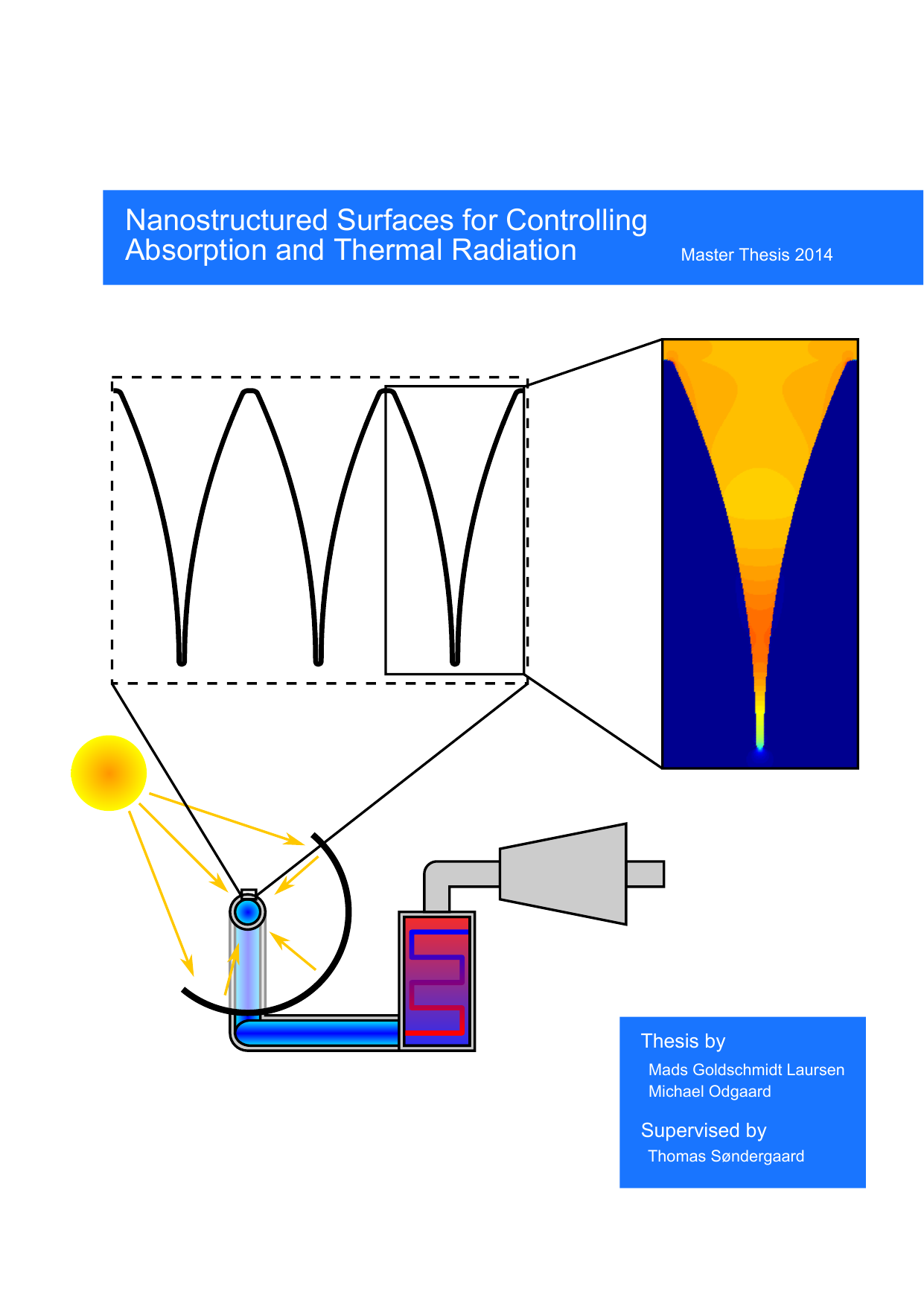
Nanostructured Surfaces for Controlling Absorption and Thermal Radiation
Translated title
Styring af Absorption og Termisk Udstråling med Nanostrukturerede Overflader
Authors
Term
4. term
Education
Publication year
2014
Submitted on
2014-06-04
Pages
82
Abstract
I denne afhandling undersøges reflektansen af ultraskarpe periodiske rillestrukturer i en guldoverflade for en generel indfaldsvinkel af lys. Dette inkluderer situationen, hvor lyset propagerer langs rillerne. Disse strukturer er interessante grundet deres kontrollerbare absorptionsegenskaber, som gør dem til attraktive materialer til brug i forskellige metoder til produktion af vedvarende energi såsom thermophotovoltaics og koncentreret solenergi. To effektive numeriske metoder præsenteres: en simpel og tilnærmet lag-matrice-metode, der bruger mode-indekset for gap-plasmoner (G-SPP'er) som et effektivt brydningsindeks, og en grundig Greens-funktions Overflade-integrale-lignings-metode (GFSIEM). Resultaterne af den simple lag-matrice-metode viser bemærkelsesværdige ligheder med de præcise resultater opnået med den nøjagtige GFSIEM, hvilket forstærker idéen om, at fysikken bag absorptionen af lys i sådanne strukturer domineres af koblingen af lys til plasmoner.
In this thesis the reflectance of ultra-sharp periodic groove arrays in a gold surface is studied for a general direction of light incidence. This includes the case of incident light propagating along the grooves. These structures are interesting due to their tunable absorption selective properties, which make them promising candidates in various methods of renewable energy production such as thermophotovoltaics and concentrated solar power. Two efficient numerical modelling approaches are presented, namely a simple and approximate stack matrix method that uses the mode-index of gap-plasmon polaritons (G-SPP's) as an effective index, and a rigorous Green's Function Surface Integral Equation Method (GFSIEM). The results of the highly simple stack matrix method show remarkable similarity to the exact results obtained with the rigorous GFSIEM, which reinforces the idea that the physics of light absorption in such structures is dominated by the coupling of light into plasmons.
Keywords
plasmonic black metal ; PBM ; Green's function ; Green ; Green's ; Green function ; GFSIEM ; absorption ; plasmon ; plasmonics ; surface plasmon ; surface plasmon polariton ; gap surface plasmon polariton ; SPP ; G-SPP ; GSPP ; stack matrix ; transfer matrix ; numerical modelling ; numerical simulations ; thermal emission ; ultra-sharp grooves ; sharp grooves ; general direction of light incidence ; periodic structures
Documents
